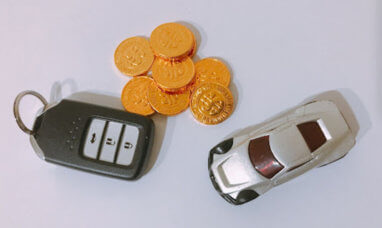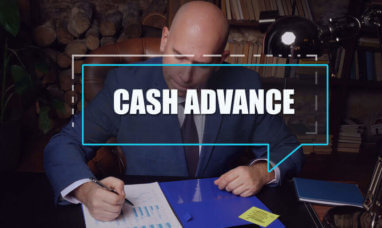Selling a car can be complex and very involving because the rules and exceptions about selling a car differ from state to state. It can also be tricky, especially if you still owe money on it.
One option is to go through a dealer or a dealership. Another option is to do it all by yourself, but this requires having the car appraised beforehand. But when you trade in the vehicle, you can save on creating ads and price negotiations. Trade-in also allows you to include the value of your old car in your next vehicle.
What is Your Financial Equity?
If you want to trade in a vehicle you owe, then you are likely in either of these situations:
-
-
- Positive equity – Positive equity is when the worth of the car exceeds the loan you owe. If you have positive equity, then you are on the safe side. It is like having funds to put in to buying a new car.
- Negative equity – When your car value is less than what you owe, you are underwater, also called negative equity.
-
If you have negative equity, you must finance the difference between the trade-in price and loan balance. You can either pay the variation in cash or another loan.
How Trading in a Car Works
If trading your car through a dealer, the dealer subtracts the car value from the price of your new set of wheels. If your trade-in car has an existing loan, the dealership assumes responsibility and pays off the loan.
At this point, the dealer handles paperwork details such as title transfer for legal ownership. If trading in a vehicle that you still owe money on, have the following documentation:
-
-
- The loan details, including the payoff value
- Car keys and remotes, if any
- Insurance proof
- A print-out copy of the trade-in price
-
Remember that the trade-in value and the price of the new vehicle are debatable. And so, it is crucial to obtain a reasonable rate of interest on the new loan for a comprehensive good deal.
A car loan calculator can estimate these values so that you know what to expect to pay each month.
Payoff Amount and Trade-in Price
If you are trading in a car, it would be a good idea to begin by checking out with your lender to know the exact amount you owe. To make the process official, ask your lender for your payoff letter. It is an official document stating;
-
-
- The payoff amount and dates
- Instructions on how to finish the payment with allowable payment means
-
Your payoff amount could be a bit higher than your outstanding balance as it sums up the interest you owe until you pay off the loan and other fees. Put a price value on your car by looking at the latest trade-in value on guides like Edmunds and Kelly Blue Books. You can then weigh up values. Know the difference between the payoff amount and the current trade-in value of the vehicle, and subsequently whether your equity is negative or positive.
Trading in a Car with Positive Equity
As earlier stated, when you have positive equity, you are in the clear. For instance, say a dealer offers $11 000 for your current vehicle, and you owe $9 500 on your loan. You have an equity of $1 500 which you can use to buy the next set of wheels.
After negotiating and coming to a fair price, the dealer deducts the equity from the new car cost. Besides, you can decrease the loan by making a down payment.
You can either provide cash or auto loan financing to cover the remaining amount of buying the car. Your new car contract ultimately includes trade-in value. Ensure that you receive the amount as per your negotiations.
Trading in a Car with Negative Equity
Are you “underwater” the car loan you took? You may ask yourself, how can I refinance my mortgage with negative equity? It’s advisable to put off your trade-in until you settle the loan. You can as well hold on until your equity becomes positive.
Luckily, car loans for bad credit and negative equity are available. But most lenders hesitate to approve it. If making the car payments becomes a struggle, you can trade your car for a cheaper one.
Rolling negative equity into a used car is another form of relief. In this case, you submit a trade-in and the value of negative equity to the dealership. The deal may sound convenient, but it is unwise. This means that you’ll be obtaining a new larger loan with more interest and negative equity, ending up in a similar situation.
However, trading in your car may be worth it if your new car loan offers a reduced interest rate. Downsizing to a low-priced vehicle may make your payments more manageable. Rolling over a car loan usaa provides loans at low and affordable rates for the car you want.
Trading in and Leasing your Car
It is possible to trade in the financed car for lease and incur much fewer costs. You minimize your lease payment each month when you put in the trade-in money as the deposit on a lease.
Assume you have a car with no negative equity, with a trade-in value of $12 000. You would like to use this car to finance the lease of a new truck which you have negotiated its price to $ 42 000. The car has a residual of $ 24 000 after a two-year lease. You have to pay $ 18 000 over the loan period plus interest and fees.
Factor in your $ 12 000 trade-in values to the lease deal to bring what you owe to $ 6 000, plus affordable interest. However, when the lease ends, you return the vehicle to the origin of the contract. You will have no equity to apply towards the deposit of your next car.
Final Steps
After completing your negotiations, take time to evaluate the contents of the contract. Ensure that the contract states the terms of agreement you agreed upon in writing.
A week or two after sealing the deal, confirm whether the lender paid off your loan. Your pending loan interest accumulates until your dealer clears it. On the bright side, the dealer has to settle the loan as fast as possible. They will require the title of the car from your lender to resell it. The lender can email you documentation showing the loan settlement.
Contact your auto insurance company to drop the old car policy. Check if your new car insurance is in order.
Featured Image: Twenty20








